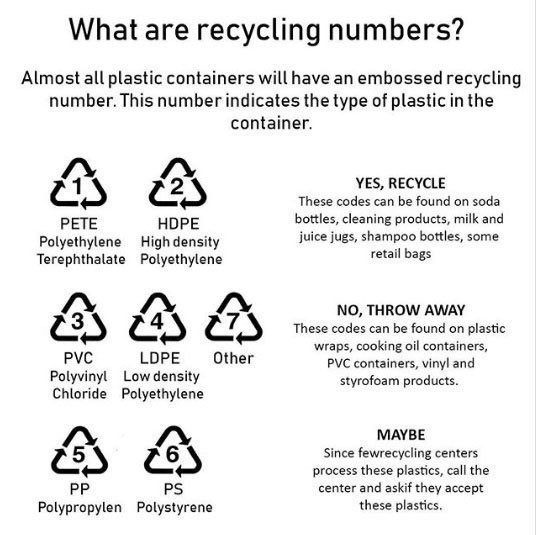Should plastic containers labeled 'safe' be put into the microwave?
Even with labeled plastic containers that can be safely used in microwave ovens, experts recommend not to use them because of the risk of chemical leakage that is harmful to human health.
Radio Channel News Asia (CNA) leads the views of professor Suresh Valiyaveettil chemistry graduate of National University of Singapore (NUS) said the chemical structure of the plastic containers for foods, whether disposable or kind Reuse the same .
Either way, it's still plastic
The difference between the two is the use of different additives (such as stabilizers and plasticizers) as well as different manufacturing processes , which can lead to differences in thickness and temperature. melting of the product.

A plastic box for food - (Photo courtesy: CNA)
For example, according to Mr. Valiyaveettil, reusable plastic containers "are often thicker, sturdier, have higher durability and can withstand varying levels of ambient conditions."
While disposable plastic containers tend to have a less stable physical structure than reusable plastic products, they will suffer less heat, according to Dr. Henry Leung, senior pharmacologist and He is also a senior lecturer at Nanyang Polytechnic University (Singapore).
Therefore, whether it's disposable or reusable plastic containers, when using them to store and reheat food in the microwave, there are precautions users need to know to avoid the risk of health effects.
Put an end to what is considered "extremely convenient" when you throw a disposable food box of disposable plastic in the microwave to heat food in minutes.
According to Valiyaveettil, this not only caused part of the container to melt in the furnace but also leaked "a small amount of additives," which are added during the production process to color the plastic. such as to increase the stability and durability of the product, to feed.
Among these additives are controversial components such as bisphenol A (BPA) and phthalate.
Despite the plasticity, easy to shape in the production process of plastic items, but the chemicals related to plastic are not good for human hormones, reproductive systems as well as fetal and infant development. new-born.
Currently the US Food and Drug Administration (FDA) confirms BPA is safe at current levels of use in food, but continues to monitor and assess the risk of phthalate effects on child health. people.
According to Valiyaveettil, even without using it at very hot temperatures, the leakage of chemicals from plastic containers into food still occurs even at a lower rate. In other words, when heated in a microwave oven, some small molecules of the additive still permeate food faster at room temperature.

Microwave oven - (Artwork: GETTY IMAGES)
Do not use plastic containers for hot food
Valiyaveettil said that it is best to never use plastic containers (either disposable or multi-use) to store food when heated in a microwave .
Under normal conditions, to use this type of box safely, users should not put hot food in plastic containers for long. If forced to use temporary, you should also switch hot food to metal or ceramic dishes, glassware as soon as possible.
Because temperature plays a significant role in the chemical leakage in plastic , users should also avoid exposing these items to direct sunlight. They should also not use plastic containers that contain highly acidic foods such as vinegar or lemonade.
Secondly, as a precaution, users should also avoid using plastic containers that contain BPA or phthalate . In many countries, there is a requirement to state whether or not this substance is on the product label.
Another way to check the plastic composition is the Resin Identification Code printed on the bottom of the product. According to Dr. Leung, this code is usually represented by numbers printed in the triangle.

Symbol recognizing plastic codes on utensils - (Image: CNA)
Conventions of digits 1-7 in Plastic Identification Code are provided as follows:
- Code 1: Polyethylene terephthalate or PET
- Code 2: High density polyethylene or HDPE
- Code 3: Polyvinyl chloride or PVC
- Code 4: Low density polyethylene or LDPE
- Code 5: Polypropylene or PP
- Code Listing 6: Polystyrene or PS
- Code Listing 7: Polycarbonate or PC and other plastics
Regarding how to "read and understand" these symbol codes, Dr. Leung said that codes 1, 2, 4, 5 and 6 will usually not contain BPA, while codes 3 and 7 can contain this substance .
According to Mr. Valiyaveettil, code 6 often contains additives such as phthalate or BPA , code 5 (PP plastic) is the most suitable polymer for all applications because of the high stability of the material.
- Using glass to change into plastic food containers should be noted to avoid poisoning the whole family
- Notes when using food plastic
- 5 food should never be put into the microwave
- The secret to deodorizing plastic containers for food
- Salted salted habits cause many people with cancer
- How do food preservatives harm young children?
- Tips to clean stains and odors on plastic
- Why does the microwave cause noise when operating?
- Is standing in front of the microwave safe to use?
- This is why you should never boil or heat eggs in the microwave
- How does the microwave oven work?
- BPA in plastic containers, milk bottles that cause male infertility
 13 causes of non-itchy rash
13 causes of non-itchy rash How the mouse with human ears changed the world?
How the mouse with human ears changed the world? The truth about 'fried rice syndrome!
The truth about 'fried rice syndrome! What is dental implant?
What is dental implant?